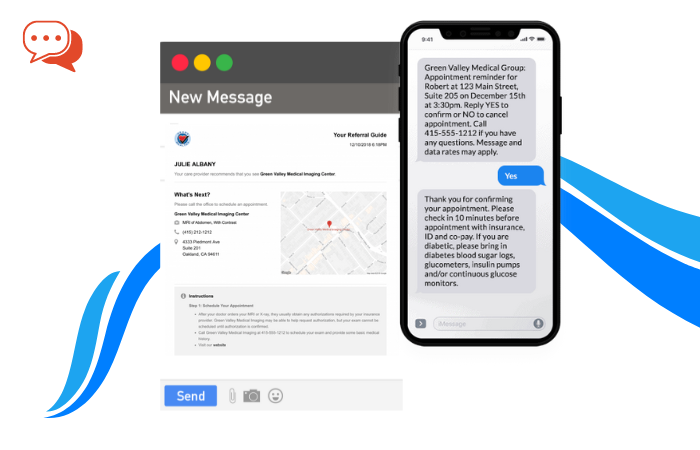Healthcare is booming; it currently employs over 16 million people across the United States, representing 10.3 percent of jobs nationally. While all other industries report an average employment growth rate of 2.1 percent in the last decade, healthcare reports a staggering 22.7 percent increase for the same period. Over the last 10 years, the healthcare industry has added over 2.6 million jobs nationwide, making it the fastest-growing economic sector in the U.S. Furthermore, healthcare expenditure across the globe is expected to reach $10 trillion by 2022, up from $7.7 trillion. What are the healthcare technology solutions that will help solve the current medical challenges we have today?
While all these numbers seem positive (and they are), there are several downsides to the current healthcare industry model. For instance, administrative costs for healthcare in the United States are almost 5 times higher than in Canada: $2,497 per person in the U.S. compared with $551 per person in Canada. More so, Americans pay more for medical costs than other nations, despite their medical care ranking last against the world’s leading developed countries.
As for any industry, more business equals more challenges. However, with the current technology at hand, most of these obstacles can be mitigated if not eliminated. Below are 5 major healthcare management concerns that can be significantly blunted with the proper use of technology.
5 Common challenges and how technology can help
Challenge #1: Global workforce shortage
According to a study from Human Resources for Health, by 2030, there will be a demand for around 80 million healthcare workers. Following the current industry model, it is expected that, by 2030, only 65 million healthcare professionals will be available, leading to a shortage of 15 million workers worldwide. Finding prospective health workers might not be the real problem; in 2012, almost 80,000 qualified nursing school applicants were turned down due to limited capacity.
How technology can help
If we are to tackle the healthcare workforce shortfall in the coming years, training more qualified personnel is necessary. Limited capacity should not be holding the health industry back. We live in the digital age, and the current technology can easily allow us to focus on remote education rather than jam-packed classrooms. Stakeholders should invest in remote learning technologies, like Google Classroom or Zoom, if they want to take the edge off limited seating capacity.
Challenge #2: Increasing pressure on healthcare services
A report by the Association of American Medical Colleges (AAMC) concludes that the number of Americans aged 65 and older will have increased by 55 percent by 2030. This alone will send healthcare demand through the roof, as elders generally require a greater need for care.
Additionally, chronic diseases and conditions are rising worldwide: chronic disease prevalence is expected to rise by 57% by the end of 2020. Recent pandemics, such as SARS-CoV-2, Ebola, and H1N1 (to name only a few), have outlined the speed at which infections proliferate worldwide. With all these elements combined, there is a strong likelihood that the healthcare industry will experience significant disruptions ahead if we keep using the current model.
How can technology help
Focusing on ‘Digital health’ would be a sure way of taking the current healthcare industry model’s weight. Commonly called “Telehealth” or connected-heath, this technology is steadily making its way into our life. A study by HIMSS Analytics reveals that over a period of 3 years, the use of digital health has increased by 71%, both in inpatient and outpatient settings. Encouraging digital health adoption would allow healthcare service providers to offer virtual online care, advice, and education. Financially, this would enable healthcare stakeholders to soak up the pressure from the skyrocketing healthcare delivery cost.

Photo by Rawpixel.com on Adobe Stock
Challenge #3: High staff turnover
With the healthcare industry expected to face a massive workforce shortage soon, having a high turnover rate will definitely affect the end service delivery. The healthcare sector has the second-worst turnover rate out of all the other industries. In 2017, the average turnover rate was 20.6 percent. Having a proper employee recognition program in place is vital, increasing employee engagement and retention.
How can technology help
Recognizing your employees’ hard work can be almost effortless if you are using reward-based systems. Scheduling software for healthcare workers or connected apps for communication will add value to your staff’s overall experience and increase employee productivity. Using mobile technology can only lead to better overall workforce management.
Challenge #4: Handling Big-data
The adoption of healthcare technology has significantly improved over the last decade but still lags when handling patient-related data. Many healthcare providers still use the ‘traditional’ Patient Information Form (PIF), which comes in the form of a pen and a printed piece of paper to be filled out. Dealing with massive volumes of data physically leads to a less productive business process as human errors, storage space, and time often gets in the way.
How can technology help
Cloud data management technology can increase business efficiency and enable the healthcare industry to extract relevant insights from all the patient-related data it has collected. Enforcing cloud data management nationwide would allow the healthcare industry to have real-time information on the population’s health. Concurrently, with the available data at hand, this would also help the industry stakeholders to focus on key priorities, make data-driven decisions, positively impact patient health, and reduce costs.
Challenge #5: Rising healthcare costs
Did you know that General Motors spends more on healthcare costs than on steel? The cost of healthcare services is determined by many stakeholders, ranging from device and pharmaceutical manufacturers to insurance policy providers—the rising costs of healthcare and pharmaceutical impact both the revenue of healthcare businesses and patients’ wallets. At the latest West Health summit, Martin Gaynor, an economics professor at Carnegie Mellon University, concludes that high healthcare spending is ultimately unsustainable.
How can technology help
Leveraging technology throughout the supply chain may lower the end price of healthcare services. From automating the production of medical devices and products, most of the production line can be robotized. You could even make use of self-driving delivery trucks, such as UPS, to move products from one point to another. Even implementing technology in day-to-day healthcare management, such as using appointment or booking apps, can lower the end cost.
What’s next in the Healthcare industry?
Without a doubt, technology will play a major role in the healthcare industry; it will seamlessly enable us to combine and compare data from patient’s medical history records, real-time health signals, financial situations, and insurance coverage.
At the bare minimum, adopting the technology culture can speed up decision-making while eliminating resource-intensive administrative tasks. If implemented on a bigger scale (national or global), Artificial Intelligence (AI), Natural Language Processing (NLP), and the Internet of Medical Things (IoMT) can drastically change the healthcare landscape in the near future.
Ultimately, technology adoption will enable us to leave behind the current point-of-care model and move to a more efficient and patient-focused experience. Turning around healthcare into a sustainable industry starts with the adoption and implementation of modern technological solutions.












